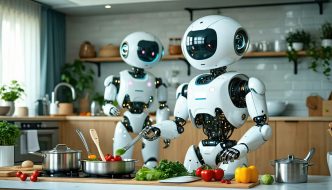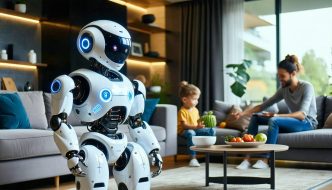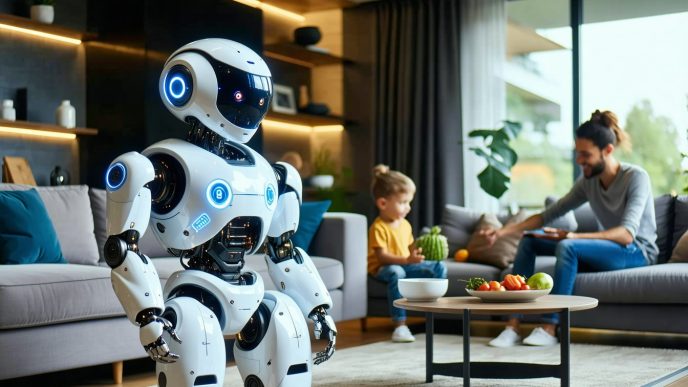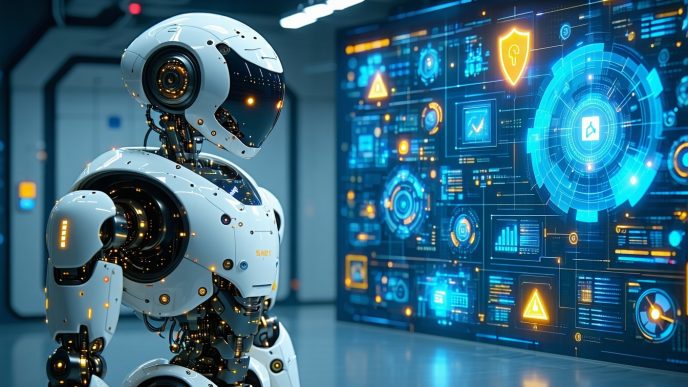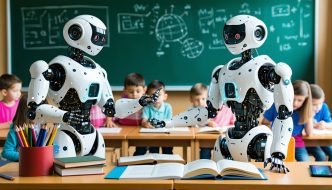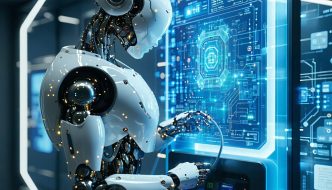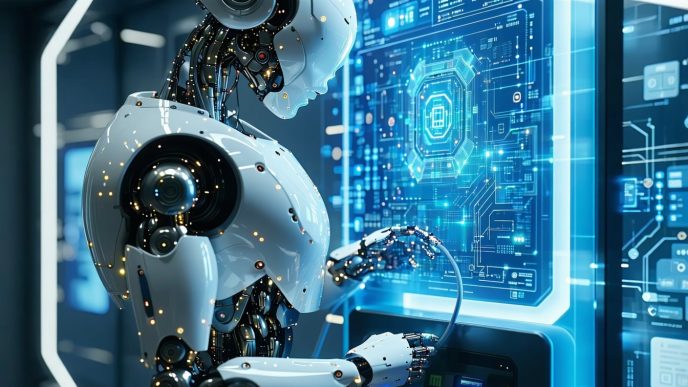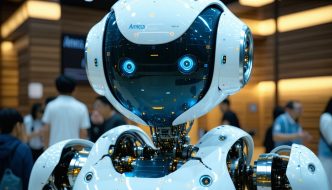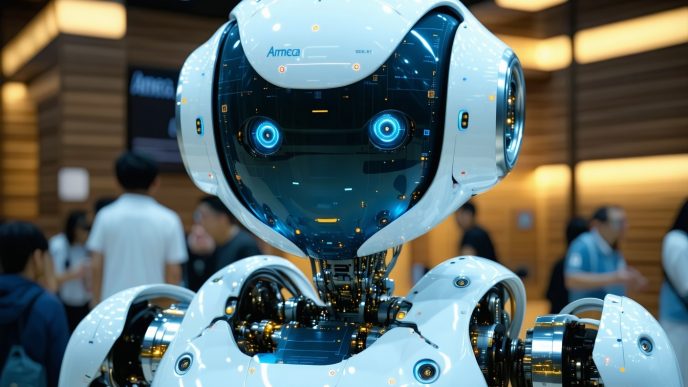The Rise of Humanoid Robots
The development of humanoid robots has seen remarkable advancements over the past few decades. This progress has transformed robotics, making these machines more capable of performing tasks traditionally completed by humans.
Advancements in Robotics
Innovations in artificial intelligence (AI), machine learning, and sensor technologies have propelled the field of robotics forward. Humanoid robots are now equipped with enhanced capabilities, enabling them to interact with their environment and learn from their experiences. For example, the integration of AI models allows these robots to make real-time decisions, while sophisticated sensors enhance their navigation and safety systems.
The following table summarizes key advancements in robotics that influence humanoid design and functionality:
| Advancement | Description |
|---|---|
| AI Integration | Allows robots to learn and adapt to new tasks. |
| Sensor Technology | Enhances navigation and interaction with surroundings. |
| Machine Learning | Enables robots to improve performance over time. |
| Human-Robot Interaction | Improves communication and collaboration with users. |
Introduction to Humanoid Robots
Humanoid robots are designed to resemble humans in both appearance and behavior. They can perform a wide range of tasks, including those related to household chores. As their capabilities continue to grow, there is increasing interest in using humanoid robots for daily chores and assistance around the home. This focus reflects a desire for automation that can reduce workload and enhance quality of life.
Examples of humanoid robots currently in development or production include the Tesla Optimus robot, the Apptronik Apollo, and the Sanctuary AI Phoenix. Each of these robots showcases unique features and functionalities aimed at making household tasks more manageable.
The potential impact of humanoid robots for daily chores extends beyond mere convenience. They offer possibilities for companionship, assistance for individuals with limited mobility, and improvements in household efficiency. Further exploration of these humanoid robots’ applications can unveil the various ways they may transform everyday living.
Capabilities of Humanoid Robots
Humanoid robots, designed to mimic human appearance and behavior, are becoming increasingly capable of performing a range of tasks. This section highlights the various functions they can execute as well as their current limitations.
Tasks Humanoid Robots Can Perform
Humanoid robots have made significant strides in terms of functionality, particularly in household settings. The following table outlines some common tasks they can manage effectively:
| Task | Description | Examples |
|---|---|---|
| Cleaning | Robot can vacuum, mop, or perform general tidying. | Automated vacuuming robots |
| Folding Laundry | Sorting and folding clothes into neat stacks. | Early prototypes like tesla optimus robot |
| Cooking | Preparing meals with basic recipes. | Robots like sanctuary ai phoenix |
| Assisting with Daily Tasks | Providing reminders, grabbing items, etc. | Service robots in home settings |
These functions make them useful allies for individuals looking to ease everyday chores, especially for busy households.
Current Limitations
Despite their evolving capabilities, humanoid robots still face several challenges that restrict their effectiveness in accomplishing daily chores. The following table displays some of these limitations:
| Limitation | Description |
|---|---|
| Advanced Motor Skills | Many robots struggle with precision tasks, such as folding clothes efficiently. Panic can occur when handling delicate items. |
| Sensor Limitations | Robots may have difficulty detecting small obstructions or understanding complex environments, affecting navigation. humanoid robot navigation |
| Adaptability | These robots often require programming for specific tasks and can struggle with unpredictable changes in the environment. |
| Cost | High development and maintenance costs hinder widespread use in homes. Refer to our article on humanoid robot costs for more details. |
As technology continues to advance, future developments may address these limitations, potentially leading to more effective humanoid robots for daily chores.
Humanoid Robots in the Home
As technology progresses, the potential for humanoid robots to assist in household tasks becomes more feasible. This section explores whether humanoid robots can effectively fold laundry and cook.
Can Humanoid Robots Fold Laundry?
The task of folding laundry is intricate due to the varying sizes and types of clothing. Humanoid robots are equipped with advanced sensors and artificial intelligence that allow them to identify clothing items and strategically fold them. These robots utilize a combination of computer vision and motion planning algorithms to achieve this task.
Table 1: Laundry Folding Capabilities of Humanoid Robots
| Robot Model | Capability | Current Status |
|---|---|---|
| Tesla Optimus | Basic Folding | Prototype Stage |
| Sanctuary AI Phoenix | Experimental | In Development |
| Apptronik Apollo | Advanced Folding | Field Testing |
| Xiaomi CyberOne | Limited Features | Concept Model |
While notable progress has been made, challenges remain. The complexity of different fabric types and the potential for entanglement during the folding process can hinder performance. Integration with smart home systems may improve efficiency in executing this task. For more details, explore our article on humanoid robots for home use.
Can Humanoid Robots Cook?
Cooking involves various skills including measuring ingredients, timing, and adjusting heat levels—all of which pose significant challenges for humanoid robots. However, advancements in robotics are paving the way for robots capable of simple cooking tasks such as preparing meals and following recipes.
Table 2: Cooking Capabilities of Humanoid Robots
| Robot Model | Cooking Features | Current Status |
|---|---|---|
| Agility Digit Robot | Meal Preparation | Under Testing |
| Unitree G1 Robot | Basic Frying | Development Phase |
| Robotics Unlimited Zeus | Recipe Following | In Field Trials |
| Ameca Robot by Engineered Arts | Interactive Cooking | In Prototyping |
Some humanoid robots can follow specific instructions to prepare meals, while others are still in the experimental phase. The future of cooking robots may include features for automatic ingredient replenishment and even meal personalization. For more insights on the potential of humanoid robots in daily tasks, see our article on humanoid robots for education.
As developments continue in this field, humanoid robots are becoming more manageable within household environments, potentially transforming how people approach daily chores.
Benefits of Humanoid Robots for Daily Chores
The integration of humanoid robots into homes offers numerous advantages, especially when it comes to managing daily chores. These advanced machines can significantly enhance the efficiency and ease of household tasks.
Time-Saving
Humanoid robots are designed to tackle repetitive tasks quickly and efficiently. By automating chores such as laundry folding, cooking, or cleaning, they free up valuable time for individuals and families.
| Task | Time Saved (approx.) |
|---|---|
| Laundry Folding | 30-60 minutes |
| Cooking a Meal | 20-40 minutes |
| Cleaning a Room | 15-30 minutes |
These robots can work continuously without breaks, enabling them to complete tasks while people engage in other activities. This time-saving potential is particularly beneficial for busy households.
Precision and Consistency
Humanoid robots excel in performing tasks with a high level of precision and consistency. Unlike humans, who may get tired or distracted, robots can maintain a steady and accurate performance throughout their operations.
For instance, when folding clothes, a humanoid robot can execute the process with uniformity, producing evenly folded garments each time. This consistency extends to cooking, where robots can follow recipes accurately, ensuring that meals are prepared to exact specifications. This quality of work can enhance overall household organization and meal preparation.
Assistance for Individuals with Limited Mobility
Humanoid robots hold special promise for individuals with limited mobility or physical disabilities. By providing assistance with daily chores, these robots can significantly improve the quality of life for those who struggle with these tasks.
Robots designed for household chores can help with:
| Task | Benefit for Individuals with Limited Mobility |
|---|---|
| Cleaning Areas | Reduces physical strain |
| Meal Preparation | Enhances independence |
| Folding Laundry | Minimizes effort required |
By addressing the physical limitations of users, humanoid robots can foster a sense of independence and empowerment, allowing individuals to maintain a comfortable living environment without reliance on others.
The emergence of humanoid robots for daily chores opens new avenues for enhancing household efficiency, precision in task execution, and greater support for individuals needing help in their day-to-day lives. For more on the various types of humanoid robots designed for home use, refer to our article on humanoid robots for home use.
Challenges of Implementing Humanoid Robots
As society considers the integration of humanoid robots into everyday life, several challenges arise. These challenges primarily relate to cost considerations and technical issues that can hinder widespread adoption.
Cost Considerations
The financial aspect of humanoid robots presents a significant barrier to their implementation in households. The development, manufacturing, and maintenance costs associated with these robots can be quite high. A breakdown of potential costs is shown in the table below:
| Item | Estimated Cost (USD) |
|---|---|
| Development and Prototyping | $100,000 – $500,000 |
| Manufacturing a Robot | $20,000 – $200,000 |
| Software Development | $50,000 – $300,000 |
| Maintenance Per Year | $5,000 – $15,000 |
Many consumers may find it difficult to justify these expenses, especially when considering the reliability and capabilities of current humanoid robots. For further insights into pricing trends, visit our article on humanoid robot costs.
Technical Challenges
The technical barriers to creating effective humanoid robots for daily chores are substantial. These challenges include:
-
Navigation Systems: Humanoid robots must possess advanced navigation capabilities to move safely and efficiently in home environments. Without accurate movement systems, robots can struggle to perform tasks effectively. More about navigation can be explored in our piece on humanoid robot navigation.
-
Sensor Technologies: Humanoid robots require sophisticated sensors to interact with their surroundings and perform tasks without causing harm. Developing reliable sensors remains a challenge in the industry. A deeper dive into sensor requirements can be found in our article on humanoid robot sensors.
-
Artificial Intelligence: For humanoid robots to understand and adapt to various tasks, advanced AI systems must be integrated. This involves programming complex algorithms that help robots learn from their environments. Explore this topic more in our discussion on AI models in humanoid robots.
-
Safety Systems: Safety for users and the robot itself is critical. Ensuring that humanoid robots can operate without posing risks is a major technical hurdle. This aspect is further examined in our article on humanoid robot safety systems.
These technical challenges are paramount when considering the development of effective humanoid robots for daily chores. The combination of cost and complex technology needs makes the current landscape an evolving field.
The Future of Humanoid Robots
Potential Developments
As technology advances, humanoid robots are expected to evolve significantly in capabilities and functionalities. Anticipated developments in humanoid robots for daily chores include enhanced AI integration, improved navigation systems, and increased adaptability to various household environments. These advancements aim to make robots more user-friendly and efficient.
The table below outlines some potential areas of development for these robots:
| Area of Development | Description |
|---|---|
| Enhanced AI Models | Implementation of advanced AI algorithms for better decision-making and learning capabilities. |
| Improved Navigation | Development of sophisticated navigation systems for smoother movement in home environments. |
| Customization | Offering users the ability to personalize robot features to suit their specific needs. |
| Voice Interfaces | Upgraded voice recognition for improved communication and command execution. |
| Safety Systems | Advanced safety mechanisms to prevent accidents during operation. |
| Integration with Smart Homes | Seamless connectivity with other smart devices for coordinated tasks. |
These enhancements aim to integrate humanoid robots more deeply into everyday life, making them indispensable aides for household chores.
Ethical and Social Implications
As humanoid robots gain prominence, ethical and social implications must be considered. These robots raise questions about privacy, employment, and interpersonal relationships.
One concern is the potential for diminished human interaction as robots take over tasks traditionally performed by people. While robots offer efficiency, they could also lead to feelings of isolation for individuals who rely on them for companionship and assistance.
Privacy is another critical issue. As household robots collect data to improve their functionality, they must be designed to protect users’ personal information and ensure data security.
The emergence of humanoid robots also brings about discussions on fairness in the job market. If robots can perform a wide range of tasks, this may change the dynamics of employment in various sectors, including domestic work and caregiving.
Overall, addressing these ethical and social implications is essential as society integrates humanoid robots into everyday life. Further exploration of these topics is necessary to strike a balance between technology advancement and maintaining human connections. For additional insights on how humanoid robots can assist particular demographics, explore the topic of humanoid robots in elder care.
